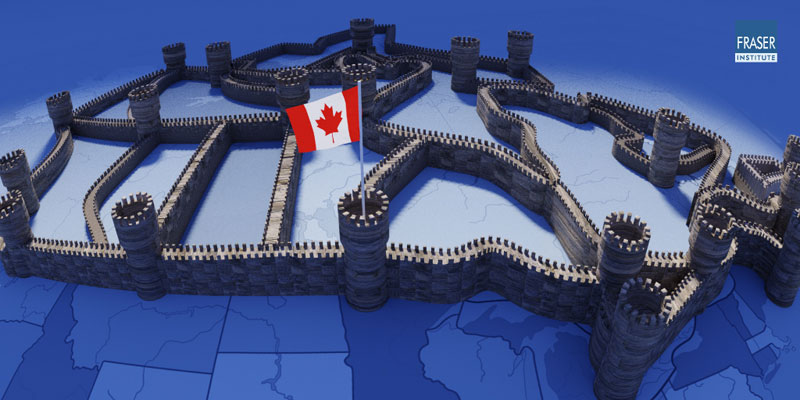Provinces should remove trade barriers to accelerate economic recovery

When developing an economic recovery plan, Canadian policymakers must advance policies to increase productivity, living standards and prosperity. Removing interprovincial trade barriers is one of best ways we can accelerate this recovery.
Over a period of several decades, government policies have created substantial barriers to investment, trade and migration among the provinces and territories. These barriers restrict the flow of products, services and workers. Often, these barriers serve no valid purpose yet hinder growth across the country.
Barriers to trade include differences in regulations, certification requirements for professions, credential recognition and provincial monopolies over the distribution of alcohol. Each province or territory has unique policies in these areas, which hinder trade, lower productivity, reduce worker mobility and raise prices for goods and services.
Indeed, research estimates that interprovincial trade barriers add between 7.8 per cent and 14.5 per cent to the prices of goods and services Canadians purchase. Put differently, these barriers add more to your shopping bill than the GST.
Clearly, the Canadian economy would benefit from reduced trade barriers that allow businesses to shift resources more easily to areas where goods and services can be produced more cheaply. Moreover, eliminating such barriers would increase trade flows, expand productive firms, decrease prices and raise household incomes.
Recent findings from the International Monetary Fund show that Canada could increase its overall economic productivity by 3.8 per cent nationally through the elimination of internal trade barriers. This represents an aggregate increase in Canada’s economy of almost $90 billion annually—more than $2,300 per person. Specific provinces may experience even greater gains with an estimated productivity boost of 12.8 per cent in Newfoundland and Labrador and 16.2 per cent in Prince Edward Island.
So how can we reduce trade barriers?
Provinces can move toward freer trade by engaging in more bilateral or multilateral partnership agreements, which seek to harmonize regulations and improve labour mobility. The New West Partnership Trade Agreement (NWPTA) between British Columbia, Alberta, Saskatchewan and Manitoba already represents a positive step in this direction. Other provinces could join to expand this agreement or pursue their own multilateral or bilateral deals.
Another option is for provinces to unilaterally reduce trade barriers. The Alberta government, for instance, removed several self-imposed barriers last year. If other provincial governments followed suit, they would also see economic gains from making imports cheaper.
Post-COVID, Canada must pursue a growth agenda that enhances both our productivity and living standards. As such, provinces across Canada must recognize that internal trade barriers hinder our economy and that their removal will help fast-track and strengthen our recovery.

